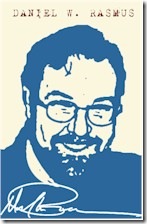The ‘workplace’ for our children is school and this institution suffers many of the same issues as the ‘knowledge worker factory’ mode of daily working. And here too the notions of flexible and ‘dynamic’ learning are just as applicable.
Dan Ramus, Microsoft ‘Futurist,’ and steward of its ‘New World of Work’ thinking, is a digital soul mate on the matters of Dynamic Work. His blog ‘The Future of Information Work’ carries lots of posts that support and extend the ideas and notions shared here. His recent post ‘Five Way To Reinvent Education and Stimulate the Economy’ describes an educational system as flexible in its use and application of resources as the Dynamic Workplace…
1. Complement teachers with retired or out of work professionals.
2. Think of schools as multi-purpose and cross-generational ‘learning hubs’ for flexible use or resources and facilities.
3. Foster entrepreneurship.
4. Distribute learning so it isn't about an educator or a single school.
5. Adopt new learning models that cross school boundaries, regional boundaries, even international boundaries.
Dan’s call for a dynamic learning place evoked memories of my own high school days where my first foray into activism was to protest a newly instated absenteeism policy. Essentially, the school said that 10 absences meant a mandatory failure grade. Not only did this smack of a violation of due process (which I had just learned something about in my civics class), but also it defined that the only real education was sitting in chairs in classrooms. At this stage of my life, I was getting involved with community programs, private study and a host of exploration. Who cared if I missed the class, as long as I caught up on the notes, did the work, learned the material and ultimately made the marks? I successfully fought back against this effort to straight jacket learning into presenteeism , and yes, the school kindly rescinded the policy later that year.
